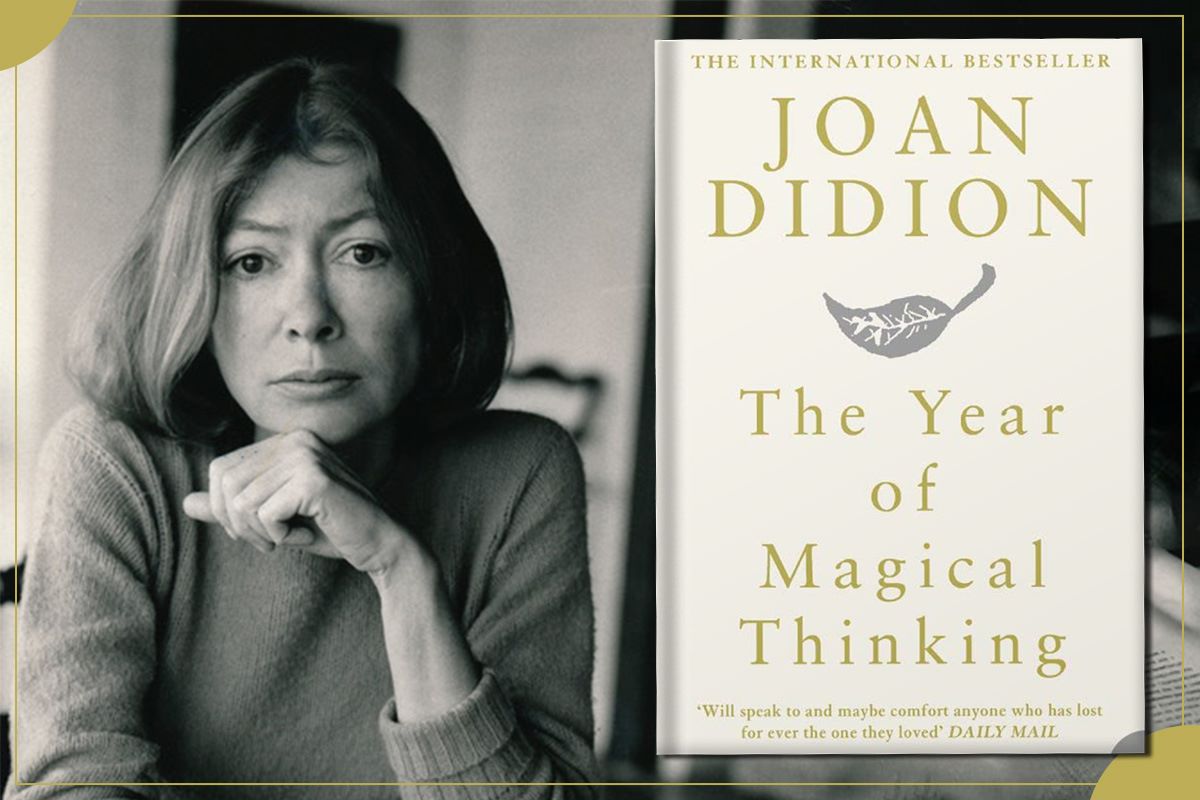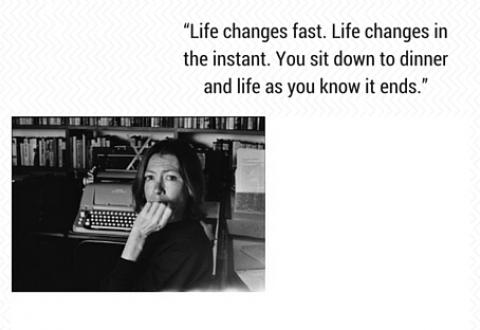Book Review: The Year of Magical Thinking
Publisher: Collins Modern Classics paperback
Published year: 2021 (first published in Great Britain by 4th Estate in 2005)
Genre: Memoir and Investigative Journalism
Language: English
The year of magical thinking is a non fiction memoir narrating the author’s experience of grief and mourning after the sudden death of her husband, John Gregory Dunne and the hospitalization of their only daughter, Quintana Roo at the same time. It is one of The New York Times’s 100 best books of the 21st century. This book won the National Book Award for Nonfiction in 2005. It focuses on the disorienting nature of grief and loss, and the fragility of life.
About the author
 |
| Joan Didion, her daughter and her husband. |
Joan Didion (1934-2021) was a journalist, novelist, memoirist, essayist, and screenwriter who wrote some of the sharpest and most evocative analyses of culture, politics, literature, family and loss. She won the National Book Award in 2005 for The Year of Magical Thinking. In the same year, Didion was awarded the American Academy of Arts & Letters Gold Medal in Criticism and Belles Letters. In 2007, she was awarded the National Book Foundation’s Medal for Distinguished Contribution to American Letters. In 2013, she was awarded a National Humanities Medal by President Barack Obama and the PEN Center USA’s Lifetime Achievement Award.
Subject matter
The memoir begins with the night Didion and her husband were sitting down to dinner. Meanwhile, her husband suddenly collapsed and passed away from a massive heart attack. In addition to this, Joan Didion’s daughter, Quintana was unconscious in the ICU at Beth Israel North due to her illness. Didion’s narrative weaves between the immediate aftermath of her husband’s death, her daughter’s critical illness, and flashbacks to moments of happiness and crisis in her marriage and family life.
 |
| Posing like a thinker. |
The entire book circulates within the irrational thoughts of Joan Didion. Didion finds herself engaging in irrational thoughts like her husband might return to her if she keeps his belongings or avoids certain realities.
Commentary on Writer’s style of writing and use of language
Joan Didion is considered one of the pioneers of New Journalism. She is renowned for the brevity and precision of her language.
Joan Didion's journalistic instincts shine throughout her writings and this book is no exception. This book is written in AP style, a style of writing generally followed in journalistic writings. Numbers, dates, days of week are written in AP style. She has fact-checked all sources and information and ensured they were all correct. Also, for instance, she has explained medical details precisely like an investigative journalist and a data analyst could have done (p 95). She has wisely adopted reverse engineering of writings in her memoir. It is to say, she has mentioned recent events first and then past incidents. It can be said that she knows how to keep her audience more curious about her writing. Not only that she seems to be more concerned even with the font size in her writing ( pp 50- 109).
Didion uses very simplistic language. The use of present tense and repeating some of the details can be considered her style of writing.
Some of the key terms that were frequently repeated throughout the memoir are:
UCLA, ICU at Beth Israel North, waterlogged, edema, clinical neuroanatomy, Beverly Wilshire, Vogue.
Major highlights of the book
Grief is different. Grief has no distance. Grief comes in waves, paroxysms, sudden apprehensions that weaken the knees and blind the eyes and obliterate daily life. (Highlighted by 5,289+ Kindle readers)
Nor can we know ahead of the fact (and here lies the heart of the difference between grief as we imagine it and grief as it is) the unending absence that follows, the void, the very opposite of meaning, the relentless succession of moments during which we will confront the experience of meaninglessness itself.
Until now I had been able only to grieve, not mourn. Grief was passive. Greif happened. Mourning, the act of dealing with grief, required attention.
Grief turns out to be a place none of us know until we reach it.
Is this book for you? Or, who should read it?
The Year of Magical Thinking has been widely praised for its honesty and emotional depth. Its deeply personal yet universally relatable account of dealing with loss and the complexities of human emotions. So, if you fall under such category then you should go for it:medical practitioners or students
whoever has experienced the ‘experience of grief’
whoever is interested to improve their vocabulary
Also, who loves fictional writings because this book is a package of horror of death, loss, sickness and many more albeit it's a non-fictional work.
Despite all these, this memoir is worth reading and deserves to be in your book lists.





Comments
Post a Comment